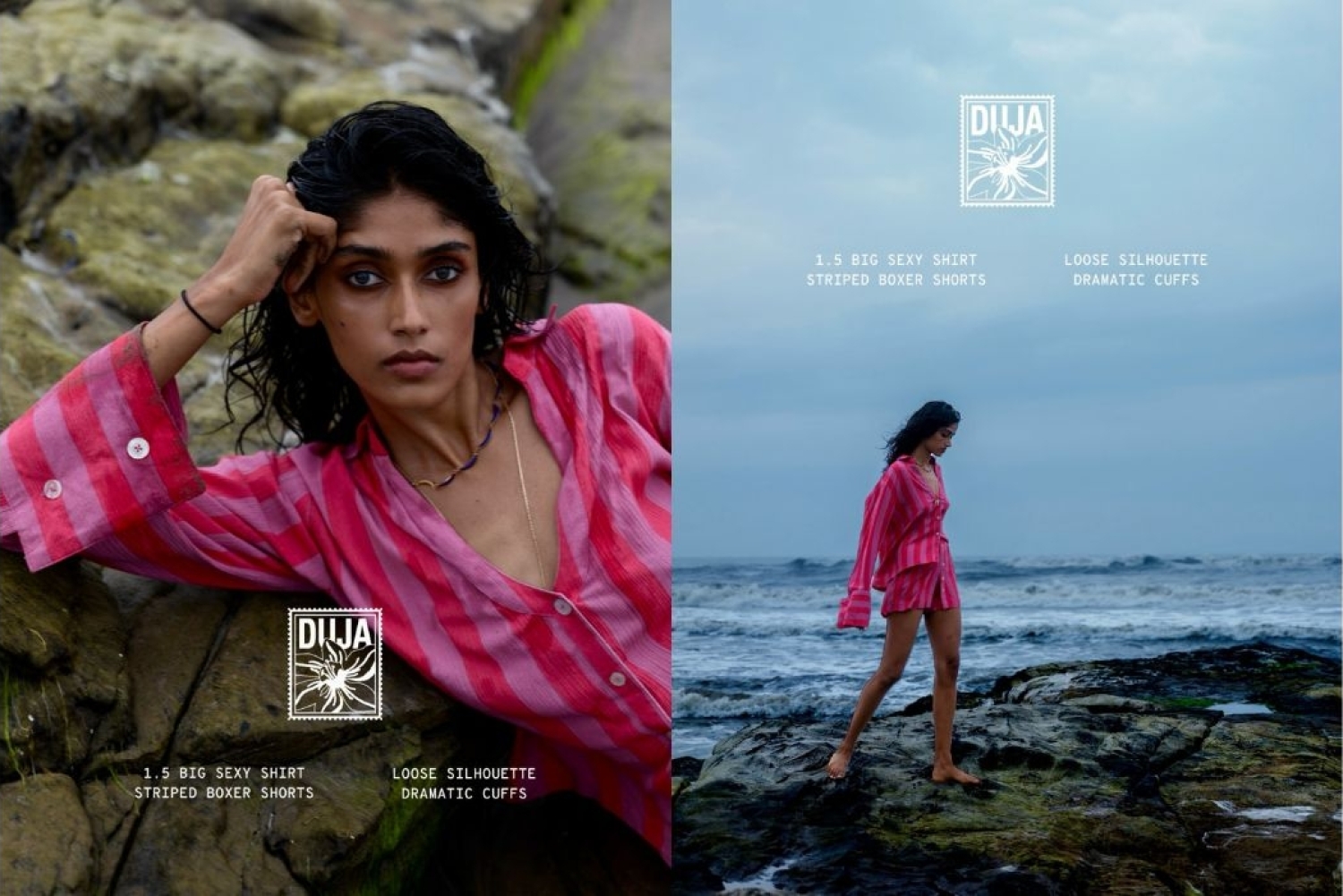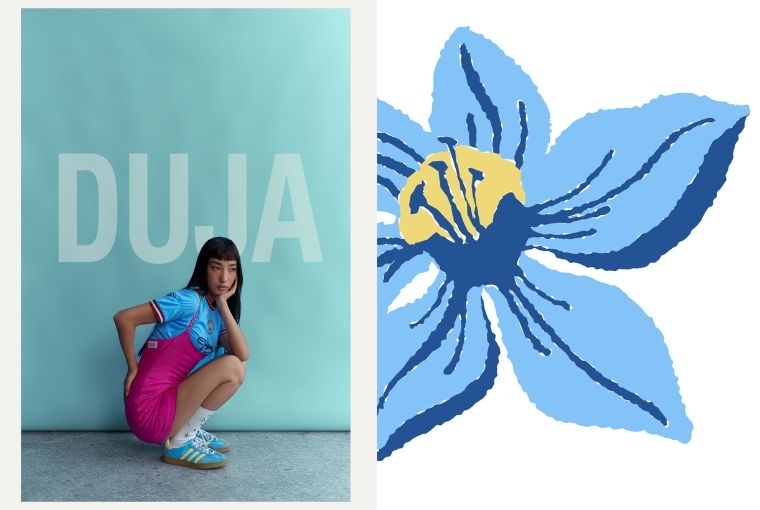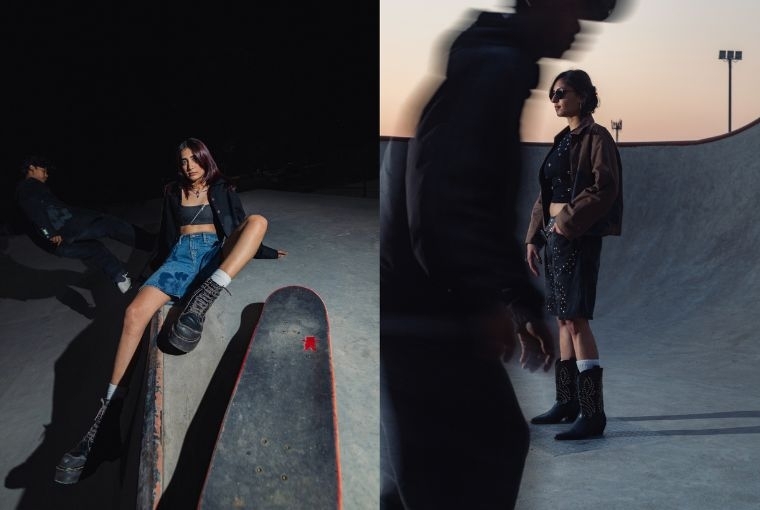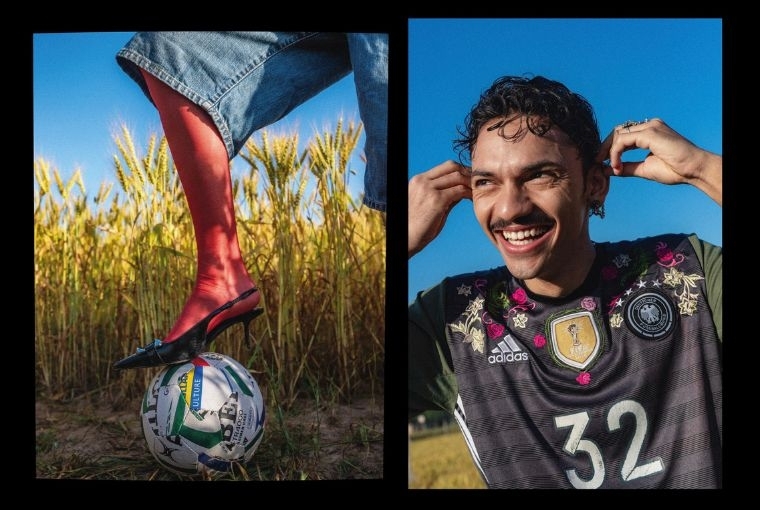

Growing up in a creative household, Ustat Kharbanda watched her mother transform old, forgotten clothes into fresh outfits. That early lesson taught her, as she recalls, that ‘garments don’t have to be disposable; they can always be reimagined.’ It planted the seed for Duja, the upcycling fashion label Kharbanda founded to give garments a second life. In fact, Duja means second in Punjabi, reflecting the brand’s core philosophy of renewal and circularity. What began as a personal love for turning cast-offs into unique wearable art has grown into a mission to challenge the idea that clothes are ever truly at the end of their life.
The Philosophy of Second Chances
At the heart of Duja is a commitment to giving materials a second chance. Rather than producing new fabrics and adding to the world’s textile waste, Kharbanda works entirely with what already exists. ‘We believe that there is no need to keep creating fresh fabrics at this point, the world already has more than enough,’ she explains. Discarded denim with years of wear left, soft worn-in jerseys, supple leather, even end-of-roll textiles destined for landfills become the raw materials for her designs. Every swatch of rescued fabric carries a backstory, and Duja’s job is to honor and extend it. ‘The fabric already has a story, and our job is to extend it,’ Kharbanda says, encapsulating the brand’s ethos of continuity.
‘The amount of post-consumer textiles being thrown away was staggering,’ she recalls, describing piles of perfectly good garments ‘full of potential’ that were headed to the trash. Today, by partnering with export houses around India, Duja can salvage usable surplus textiles on a much larger scale, bringing discarded materials ‘back into the circle instead of letting them end up in landfills.’

Playful Experimentation in Design
One glance at a Duja creation shows that playfulness is central to the brand’s DNA. Kharbanda proudly calls Duja an 'experimental house' that’s unafraid to push boundaries. Their process, she explains, is all about 'breaking things apart and building them again in unexpected ways.' In practice, that might mean completely deconstructing a denim jacket and rebuilding it with an unorthodox silhouette, or layering scraps of leather onto an old jersey and embroidering it to give the material a whole new character. Yet no matter how unconventional the method, Duja’s designs never lose sight of wearability. It’s a delicate balance between risk-taking and practicality. Kharbanda and her team are intent on making art wearable. 'We want to make art wearable, not create fashion that looks like art but can’t actually be worn,' she emphasizes. In other words, even the boldest reimagined piece must still feel at home in someone’s everyday wardrobe. A wildly avant-garde jacket, for example, will still be sturdy, comfortable and versatile enough to become a wardrobe staple for years to come. This focus on durability grounds the whimsy, ensuring that function isn’t sacrificed.
Craftsmanship Meets Sustainability
Another key to Duja’s aesthetic lies in the handcrafted details that skilled artisans add to each piece. Kharbanda may hand-select each fabric for its potential, but traditional craft techniques ultimately transform scraps into statement pieces. Duja works with craftspeople across India using techniques like mirror work, block printing, and intricate embroidery, letting these heritage arts flourish on modern silhouettes. These surface treatments aren’t just decorative, they give each rescued fabric a new identity. A dull cast-off textile might be reborn with elaborate embroidery as a vibrant jacket panel, while scrap leather could be cut and appliquéd into edgy patches and trims. 'It’s never just fabric stitched together,' Kharbanda explains. 'It’s the interaction between rescued materials and skilled human hands that makes each Duja garment truly one of a kind.' And because they’re crafted with care, Duja’s upcycled clothes are built to last, defying the throwaway ethos of fast fashion.

Style First, Sustainability by Design
In an era when 'sustainable fashion' is often just a buzzword, Duja keeps things authentic by design. Because the label’s raw materials are finite and rescued, mass production isn’t an option, a built-in limitation that ensures intentional, small-batch collections. 'We can’t mass-produce because our raw materials are limited and rescued, and that alone keeps us authentic,' Kharbanda points out. Still, she is quick to emphasize that Duja is a fashion brand before anything else, meant to attract people with its style and attitude. 'Duja has to stand out for its style,' she says. Ideally, a customer falls in love with a jacket’s silhouette or a shirt’s quirky detailing first, and only later discovers it was born from textile waste. 'If someone connects with our design first and then discovers it’s also sustainable, that’s when the idea really sticks,' Kharbanda explains. By showing that conscious fashion can be edgy, vibrant and full of personality, Duja dispels the notion that sustainability requires sacrificing aesthetics. As she puts it, 'conscious fashion doesn’t have to compromise on attitude, individuality, or creativity.'
One-of-One Exclusivity and Collaborations
Duja’s output is inherently limited, often truly one-of-a-kind, and that exclusivity has become part of its appeal. 'No two rescued garments are ever the same,' Kharbanda says. The team might spend days deconstructing and reconstructing a single garment until it 'feels like a true Duja piece.' Customers know that when they purchase a Duja piece, they’re getting something no one else has. Owning a Duja original can feel akin to collecting art or vintage: deeply personal and impossible to replicate. This ethos of depth and individuality extends to Duja’s collaborations as well. Recent projects include a capsule with PUMA that added upcycled laces, patches and bespoke hardware to the brand’s sportswear staples; a tie-up with jewelry label Schwifty where garments were embellished with jewelry-inspired metalwork; and a partnership with STRUCT that transformed a cult-favorite sports jersey into a limited-edition upcycled piece. In each case, these projects were 'not about volume but about depth,' as Kharbanda points out, emphasizing creativity and storytelling over simply churning out more product.

Building a Community Through Storytelling
For Kharbanda, sharing the story behind each garment is just as important as the garment itself. Duja doesn’t just drop new products, it builds a concept around each collection so people connect with the story behind the clothes. 'We don’t just put out products, we create concepts and campaigns around them so people connect with the bigger idea, not just the piece itself,' she explains. Through social media and behind-the-scenes content, the brand shows exactly how a tattered pair of pants or a pile of fabric scraps was rescued and transformed into a head-turning outfit. By pulling back the curtain on these transformations, Duja turns what some might dismiss as 'second-hand' clothing into something aspirational. Looking ahead, Kharbanda hints at collaborations with major brands on the horizon to bring the upcycling ethos to a much wider audience. At the same time, she’s experimenting with new techniques and unconventional waste materials, working with innovators and artisans alike. The goal is to make circular fashion second nature across the industry. 'Fashion’s future doesn’t lie in producing endlessly, but in rethinking endlessly,' she says, a mantra that neatly encapsulates Duja’s contribution to the industry. As discarded fabrics continue to find new life in Duja’s workshop and emerge as covetable fashion statements, it’s clear that reimagining fashion is not just a trend but a movement. And with each rescued garment, Duja is helping steer it toward a more circular future.
Words Harita Odedara
Date 21-10-2025